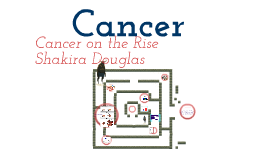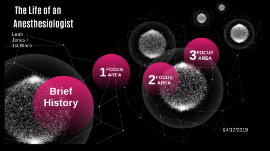Cancer Powerpoint
Transcript: Laryngeal Cancer Background Info Background Info Background Information Background Information Laryngeal cancer is a disease in which malignant (cancer) cells form in the tissues of the larynx. The larynx is a part of the throat, between the base of the tongue and the trachea. The larynx contains the vocal cords, which vibrate and make sound when air is directed against them. The sound echoes through the pharynx, mouth, and nose to make a person's voice. Background Information Background Information There are three main parts of the larynx: Supraglottis: The upper part of the larynx above the vocal cords, including the epiglottis. Glottis: The middle part of the larynx where the vocal cords are located. Subglottis: The lower part of the larynx between the vocal cords and the trachea (windpipe). Background Information Background Information Most laryngeal cancers form in squamous cells, the thin, flat cells lining the inside of the larynx. Laryngeal cancer is a type of head and neck cancer. Background Information Background Information Approximately 13,150 people are diagnosed with laryngeal cancer each year. About 60% start in the glottis, 35% in the supraglottis and the rest develop in the subglottis or overlap more than one area. Background Information Background Information It is more common in men than women and most commonly diagnosed between the ages of 55-64. The front of the larynx in men, where the central plates form a ridge, is often referred to as the “Adam’s Apple” The larynx produces raw sound, which is formed into recognizable sounds through the mouth. Background Infomation Background Infomation Sypmtoms Sypmtoms A sore throat or cough that does not go away. Trouble or pain when swallowing. Ear pain. A lump in the neck or throat. A change or hoarseness in the voice. Diagnostic Tests Diagnostic Tests Physical exam of the throat and neck: An exam to check the throat and neck for abnormal areas. The doctor will feel the inside of the mouth with a gloved finger and examine the mouth and throat with a small long-handled mirror and light. The neck will be felt for swollen lymph nodes. Diagnostic Tests Diagnostic Tests Biopsy : The removal of cells or tissues so they can be viewed under a microscope by a pathologist to check for signs of cancer. The sample of tissue may be removed during one of the following procedures: Laryngoscopy : A procedure to look at the larynx (voice box) for abnormal areas. A mirror or a laryngoscope (a thin, tube-like instrument with a light and a lens for viewing) is inserted through the mouth to see the larynx. A special tool on the laryngoscope may be used to remove samples of tissue. Endoscopy : A procedure to look at organs and tissues inside the body, such as the throat, esophagus, and trachea to check for abnormal areas. An endoscope (a thin, lighted tube with a light and a lens for viewing) is inserted through an opening in the body, such as the mouth. A special tool on the endoscope may be used to remove samples of tissue. Diagnostic Tests Diagnostic Tests CT scan (CAT scan): A procedure that makes a series of detailed pictures of areas inside the body, taken from different angles. The pictures are made by a computer linked to an x-ray machine. A dye may be injected into a vein or swallowed to help the organs or tissues show up more clearly. This procedure is also called computed tomography, computerized tomography, or computerized axial tomography. Diagonostic Tests Diagonostic Tests PET scan (positron emission tomography scan): A procedure to find malignant tumor cells in the body. A small amount of radioactive glucose (sugar) is injected into a vein. The PET scanner rotates around the body and makes a picture of where glucose is being used in the body. Malignant tumor cells show up brighter in the picture because they are more active and take up more glucose than normal cells do. Diagnostic Tests Diagnostic Tests Bone scan : A procedure to check if there are rapidly dividing cells, such as cancer cells, in the bone. A very small amount of radioactive material is injected into a vein and travels through the bloodstream. The radioactive material collects in the bones with cancer and is detected by a scanner. Diagonostic Tests Diagonostic Tests Barium swallow : A series of x-rays of the esophagus and stomach. The patient drinks a liquid that contains barium (a silver-white metallic compound). The liquid coats the esophagus and stomach, and x-rays are taken. This procedure is also called an upper GI series. Treatements Treatements The stage of the disease. The location and size of the tumor. Keeping the patient's ability to talk, eat, and breathe as normal as possible. Whether the cancer has come back (recurred). Lasar Surgery Lasar Surgery Photodynamic therapy (PDT) : you have an injection of a drug that makes laryngeal cancer cells sensitive to the laser light. PDT may also be used to control symptoms of advanced laryngeal cancer. The surgeon makes a cut in your

















